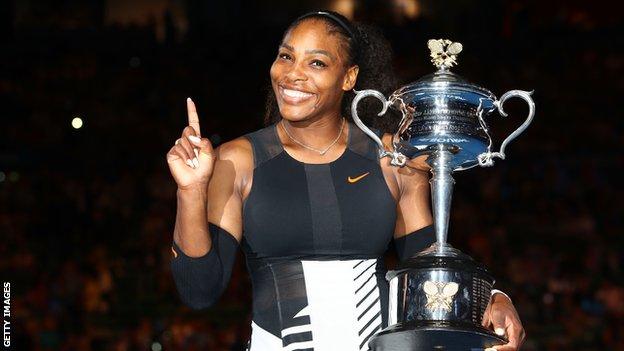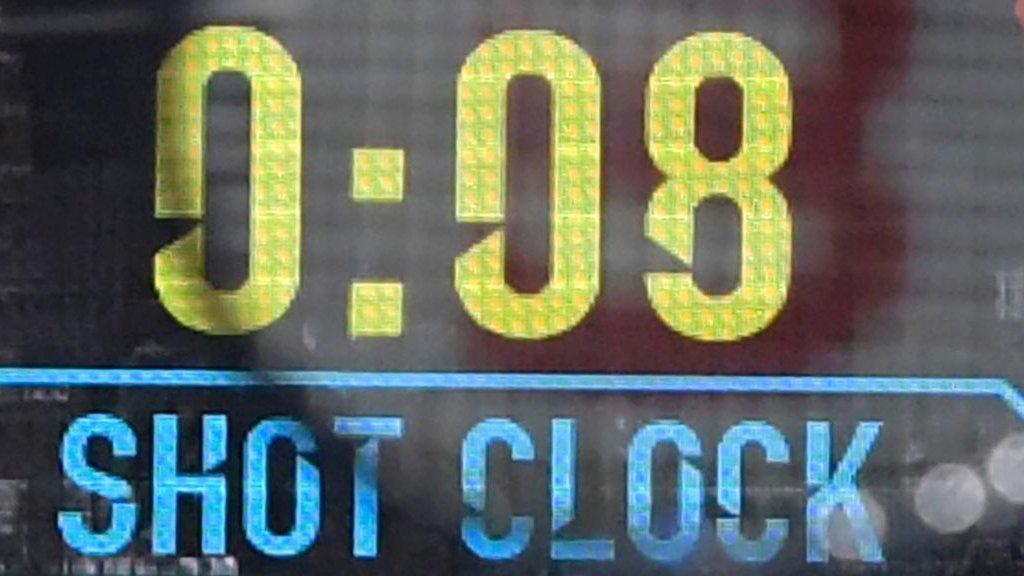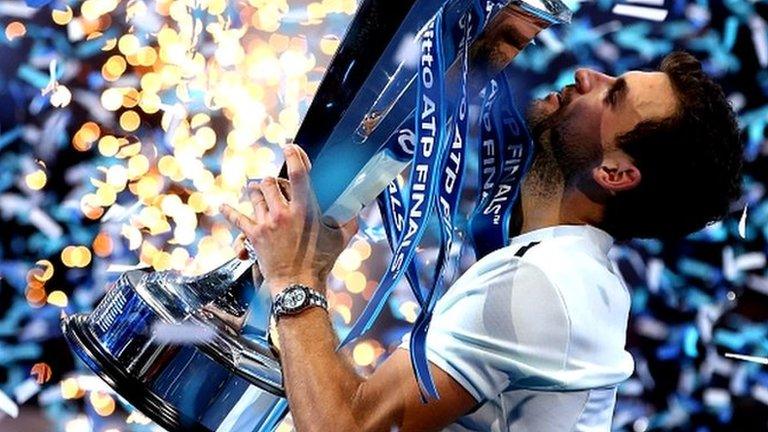Australian Open: Roger Federer, Rafael Nadal and the shot clock
- Published
- comments

Serena Williams won the Australian Open this year
Roger Federer thinks it is "stressful", and Rafael Nadal says it is "not good for the future of the Tour".
But at January's Australian Open, a shot clock will count down in between points to ensure players serve within 25 seconds.
The Australian Open's proposal has the unanimous support of all the Grand Slams, so there is a chance it will be on display at Wimbledon next July.
The All England Club will have the luxury of being able to gauge the success of the clock before deciding whether it would sit nicely amid the traditional surroundings of the Championships.
The International Tennis Federation must first approve a change in the rules, as unlike on the ATP and WTA Tour, players are currently expected to serve within 20 seconds in a Grand Slam.
In reality, the umpires allow them (at least) 25 seconds, so this appears a formality.
The shot clock was trialled during qualifying, junior and wheelchair matches at this year's US Open and again at this month's ATP Next Gen Finals in Milan.
The response was very positive, and yet world number one Nadal and number two Federer have serious reservations.
"I believe it is not something that is good for the future of the Tour," Nadal said before last week's ATP Finals in London.
"For me personally, I am not worried at all. I don't want to play for 10 more years. I can adapt easily to that.
"But in my opinion, it's not the same playing at 15 degrees [Celsius] or 18 degrees than playing at 35 degrees and that's why we have umpires, as they have to evaluate all the conditions to create the best show possible for the fans.
"In my opinion, having a clock with 25 seconds playing in some extreme conditions you cannot have the best show possible."
Federer thinks it can become "quite stressful" and says it might have led to players cramping on court in Milan.

The shot clock was used during the Next Gen ATP Finals in Milan earlier this month
An effective and discreet innovation
From my experience, the shot clock is an effective and discreet innovation - which will allow the rules to be enforced more strictly and consistently.
The clock ticks down silently from 25 seconds, and you very quickly cease to notice it. And some discretion is still available to the umpires, who in Milan only began the countdown as they announced the score - and after the applause had died down.
So a lung-bursting rally of 30 shots, which attracts wild applause, will allow players far longer than 25 seconds to recover.
The Grand Slam Board has also decided to enforce strictly the length of the warm-up from next year. But players will still have seven minutes before the first ball is struck from the time they walk on court, which can often feel interminable. After all, how long do you need to toss a coin?
In another change for 2018, a player who is on site but unfit to play and withdraws before the start of the main draw will still receive 50% of the first-round prize money.
This became a priority for the All England Club after Novak Djokovic and Roger Federer both won by retirement on Centre Court in less than 45 minutes on the second day of this year's Wimbledon.
The ATP decided at the start of this year to award injured players all their first-round prize money for withdrawing before the event.
With a first-round losers cheque worth £35,000 at Wimbledon, it remains to be seen whether the prospect of foregoing half of that amount will still prove a disincentive for some.
In future, however, any player who is judged to have performed "below professional standards" could be fined all of the first-round money they have earned.
The final change proposed by the Grand Slam Board will have to wait until 2019 - but it is their intention to increase the jeopardy for the top seeds in the opening two rounds.
Since 2001, 32 players have been seeded - which has often led to some predictable outcomes - but from 2019, there would be only 16 seeds.
And if the rankings remain as they are now, Nick Kyrgios, 2014 US Open runner-up Kei Nishikori and 2016 Wimbledon finalist Milos Raonic would all be potential first-round opponents for Federer and Nadal.
- Published21 November 2017

- Published19 November 2017
